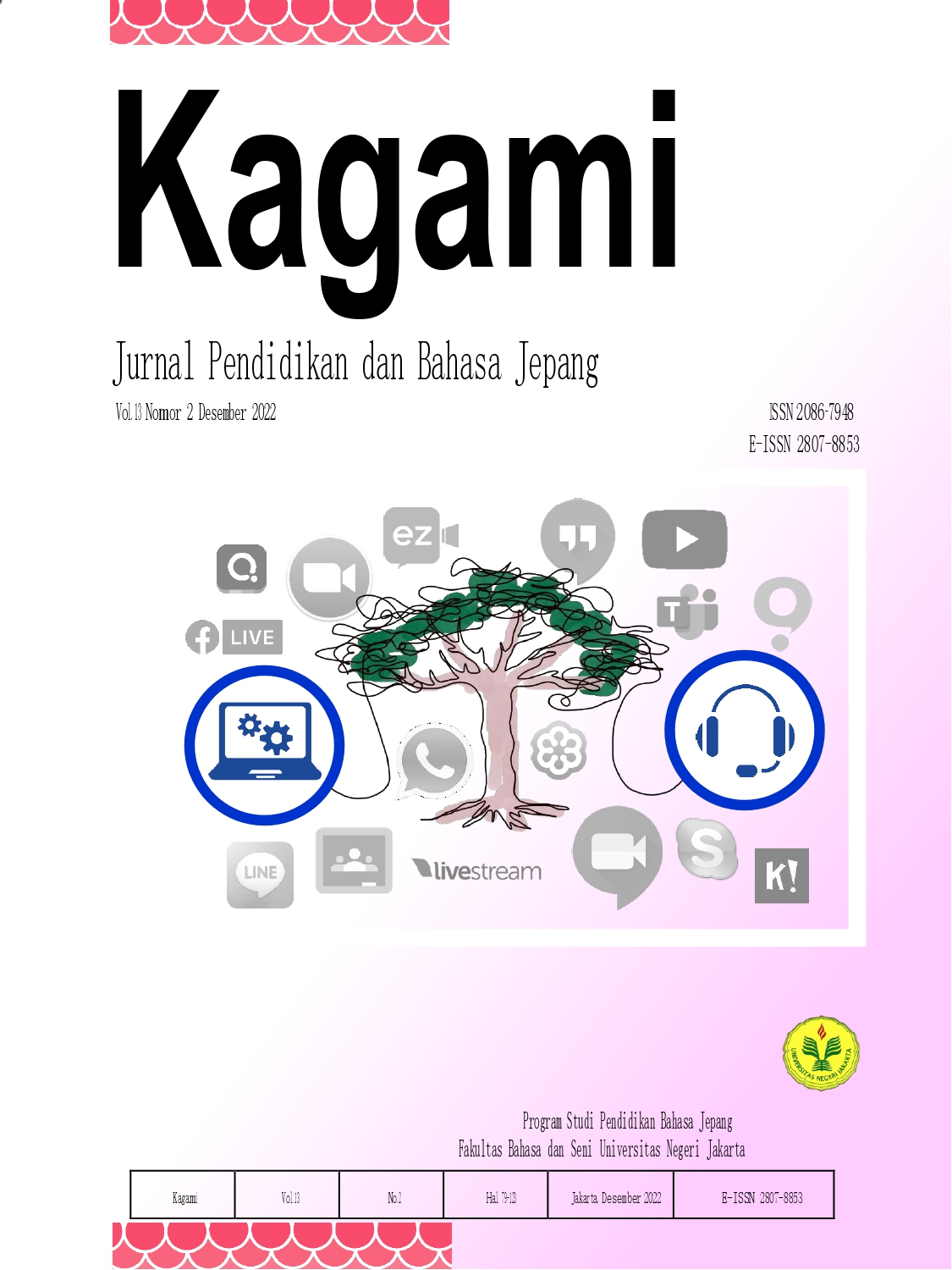Teknik Penerjemahan Amplifikasi Dalam Takarir Film “Gintama Live Action” Karya Hideaki Sorachi
Keywords:
Amplification Translation Technique, Film, Gintama Live ActionAbstract
This study aims to determine the form and function of the amplification translation technique in the subtitle of the film "Gintama Live Action" by Hideaki Sorachi. The theory used is the theory of translation techniques from Molina & Albir (2002:510) where the addition of this technique is by revealing the details of the message explicitly or paraphrasing an implicit information from Source Language into Target Language. The method used for this research is descriptive qualitative method and observe with note-taking technique because this study uses film objects as a place to find data related to research. From the results of this study, it is known that there is an amplification translation technique with an explicit form that serves to add meaning to ambiguous words. Then, the form of footnotes is to provide information in the form of references to make it easier for the audience to understand the meaning contained in the conversation, both historically and culturally. Descriptive form is to add the shape of the object or character being discussed. Last, paraphrase form is to explain the meaning of a sentence that has no lexical equivalent in the target language.
References
Becher, Viktor. (2011). Explicitation and implicitation in translation. A corpus-based study of English-German and German-English translations of business texts. Dissertation. UNIVERSITÄT HAMBURG.
Hastuti, E. D. Nunun Tri Widarwati, Giyatmi, and Ratih Wijayava. 2011. Analisis Terjemahan Film Inggris-Indonesia: Studi Kasus Terjemahan Film “Romeo And Juliet, 57-66.
Larson, Mildred L. (1991). Penerjemahan Berdasar Makna: Pedoman untuk Pemadanan Antar bahasa(Alihbahasa: Kencanawati Taniran). Jakarta : Arcan.
Lestari, W., Yoyo, Y., & Zaini, A. R. (2020). Amplification and description techniques in the translation of Arabic phrases in Matan Al-Ghayah wa Al-Taqrib. Izdihar: Journal of Arabic Language Teaching, Linguistics, and Literature, 3(2), 113-128.
Mayor, M. (Ed.). (2009). Longman dictionary of contemporary English. Pearson Education India. Tersedia di https://www.ldoceonline.com/dictionary/
Molina, L., & Hurtado Albir, A. (2002). Translation techniques revisited: A dynamic and functionalist approach. Meta: Journal des Traducteurs/Meta: Translators' Journal, 47(4), 498-512.
Newmark, Peter. (1988). A Textbook of Translation. New York: Prentice Hall.
Nababan, M. R. (1999). Teori menerjemah bahasa Inggris. Pustaka Pelajar.
____________. (2010). Teknik-teknik Penerjemahan Teks. Jurnal Kajian Linguistik dan Sastra, 76(3). Surakarta. Universitas Sebelas Maret.
Nida, E. A. (1964): Toward a Science of Translating with Special Reference to Principles and Procedures Involved in Bible Translating, Leiden: E.J.Brill.
Vinay, Jean-Paul & Jean Darbelnet. (1995). Comparative stylistics of French and English: A methodology for translation. Amsterdam & Philadelphia: John Benjamins.
Walter, E. (Ed.). (2008). Cambridge advanced learner's dictionary. Cambridge university press. Tersedia di https://dictionary.cambridge.org/dictionary/english/





